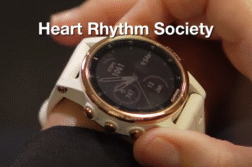DALLAS, Texas (Ivanhoe Newswire) — Defibrillating pacemakers are typically implanted in and around the heart using wires to transport electrical signals, but when a patient’s heart can’t handle the wires, there can be significant problems. Now, there is a wireless or Wise CRT treatment that is making a huge difference for some patients.
Forty-eight-year-old Angela Tasby has been having heart problems since 2013. Last year, efforts to attach a defibrillator failed because her blood vessels were too small for the electrical leads. She was facing a possible heart transplant. Today, she is on the road to recovery, because of a chip the size of a grain of rice that uses wireless technology to keep both sides of her heart pumping in synch.
“It’s a blessing, so you don’t have any wires hanging off you or anything. Everything is wireless, and you can continue with your daily life,” said Tasby.
“It is the first device along the way to provide this sort of therapy without having to depend on leads that are mechanical devices that can fail,” said Brian DeVille, MD, Electrophysiologist at Baylor Scott & White the Heart Hospital – Plano.
Dr. DeVille confirms that the wireless cardiac resynchronization therapy study saved Tasby from open chest surgery.
“I did not look like this at first, and you can ask my family and my doctors. It’s a miracle, a blessing,” Tasby told Ivanhoe.
A blessing Tasby and her husband Roderick are enjoying every day.
Not only did the device save Tasby from an open chest surgical procedure, all episodes of heart failure have been completely eliminated, and she and her husband are planning a vacation, they never thought they would take.
Contributors to this news report include: Don Wall, Producer; Thom Webb, Videographer; Cyndy McGrath, Supervising Producer; Roque Correa, Editor.
To receive a free weekly e-mail on Medical Breakthroughs from Ivanhoe, sign up at: http://www.ivanhoe.com/ftk
MEDICAL BREAKTHROUGHS
RESEARCH SUMMARY
TOPIC: WIRELESS WISE THERAPY SAVES THE HEART
REPORT: MB #4605
BACKGROUND: Defibrillators are devices that restore a normal heartbeat by sending an electric pulse or shock to the heart. They are used to prevent or correct an arrhythmia, a heartbeat that is uneven or that is too slow or too fast. Defibrillators can also restore the heart’s beating if the heart suddenly stops. Defibrillators can prevent sudden death among people who have a high risk of a life-threatening arrhythmia. They include implantable cardioverter defibrillators (ICDs), which are surgically placed inside your body, and wearable cardioverter defibrillators (WCDs), which rest on the body. It can take time and effort to get used to living with a defibrillator, and it is important to be aware of possible risks and complications.
(Source: https://www.nhlbi.nih.gov/health-topics/defibrillators)
CHD: Coronary microvascular disease (sometimes called small artery disease or small vessel disease) is heart disease that affects the walls and inner lining of tiny coronary artery blood vessels that branch off from the larger coronary arteries. Coronary heart disease (CHD), also called coronary artery disease, involves plaque formation that can block blood flow. In coronary MVD, the heart’s tiny coronary artery blood vessels do not have plaque, but damage to the inner walls of the blood vessels that can lead to spasms and decrease blood flow to the heart muscle. Women more frequently develop coronary microvascular disease and it occurs particularly in younger women. According to the National Heart, Lung, and Blood Institute’s Wise study (Women’s Ischemia Syndrome Evaluation), research is ongoing to learn more about the role of hormones in heart disease and to find better ways to diagnose coronary MVD.
NEW TECHNOLOGY: In patients with heart failure where the left ventricle is failing, CRT – also known as a biventricular defibrillator – can have a significant benefit. However, in approximately 30 percent of potential candidates, the lead placed on the left ventricle fails to work, usually due to unfavorable vein anatomy, unacceptable phrenic nerve stimulation when activated, or pacing thresholds too high to stimulate the heart effectively. Through the SOLVE CRT trial, investigators will evaluate a new implantable cardiac system that provides left ventricular endocardial pacing stimulation in conjunction with a previously placed traditional pacemaker, defibrillator, or CRT device with a nonfunctional left ventricular lead.
(Source: https://www.thehearthospitalbaylor.com/Pages/CV-IQ-SOLVE-CRT-Trial.aspx)
FOR MORE INFORMATION ON THIS REPORT, PLEASE CONTACT:
Susan Hall, PR
214-820-1817
If this story or any other Ivanhoe story has impacted your life or prompted you or someone you know to seek or change treatments, please let us know by contacting Marjorie Bekaert Thomas at mthomas@ivanhoe.com




